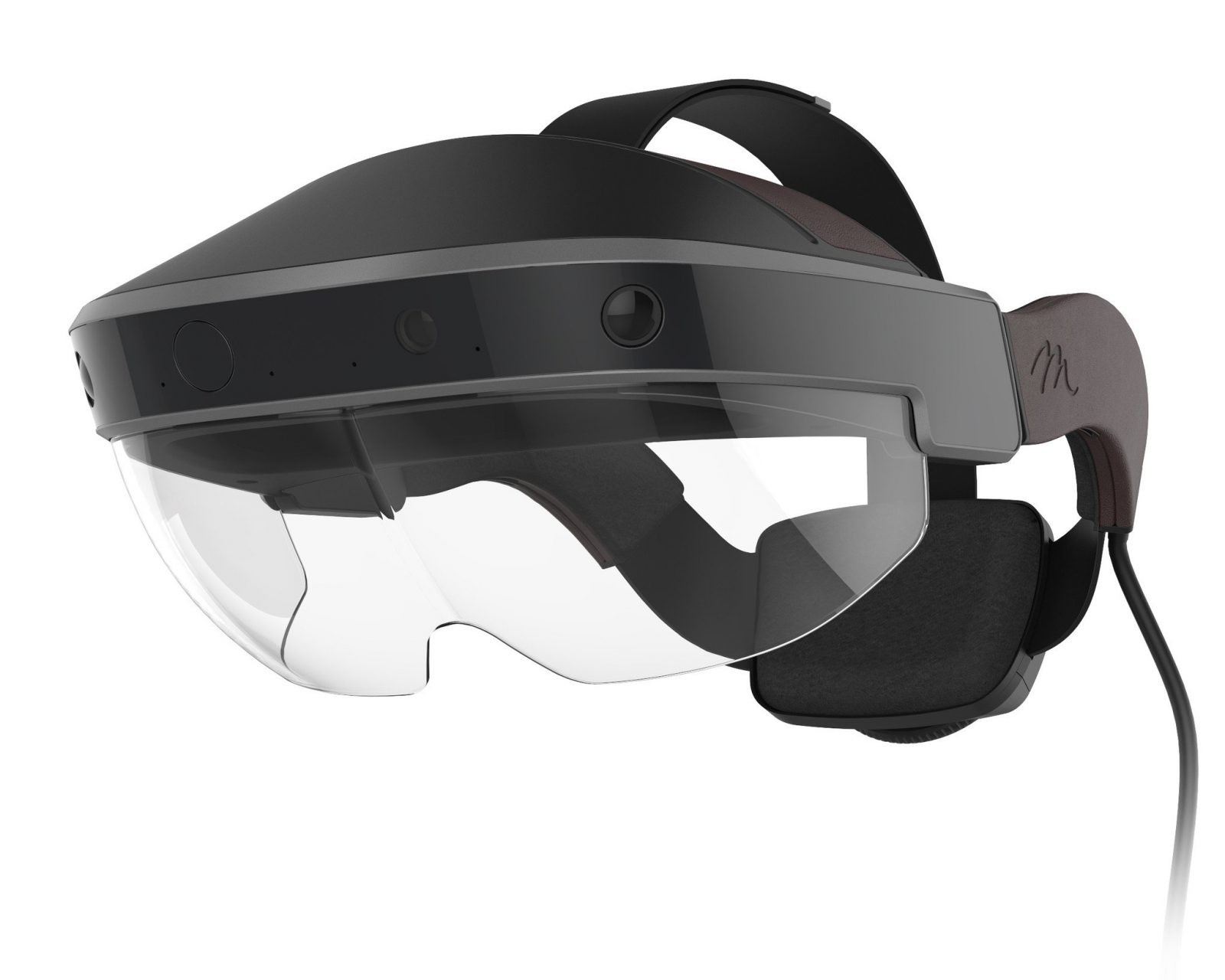
It’s certainly proof of concept. The Meta 2 augmented reality (AR) headset is not commercial-ready, but it is in the hands of every developer in the car industry, along with developers in 3D and other fields.
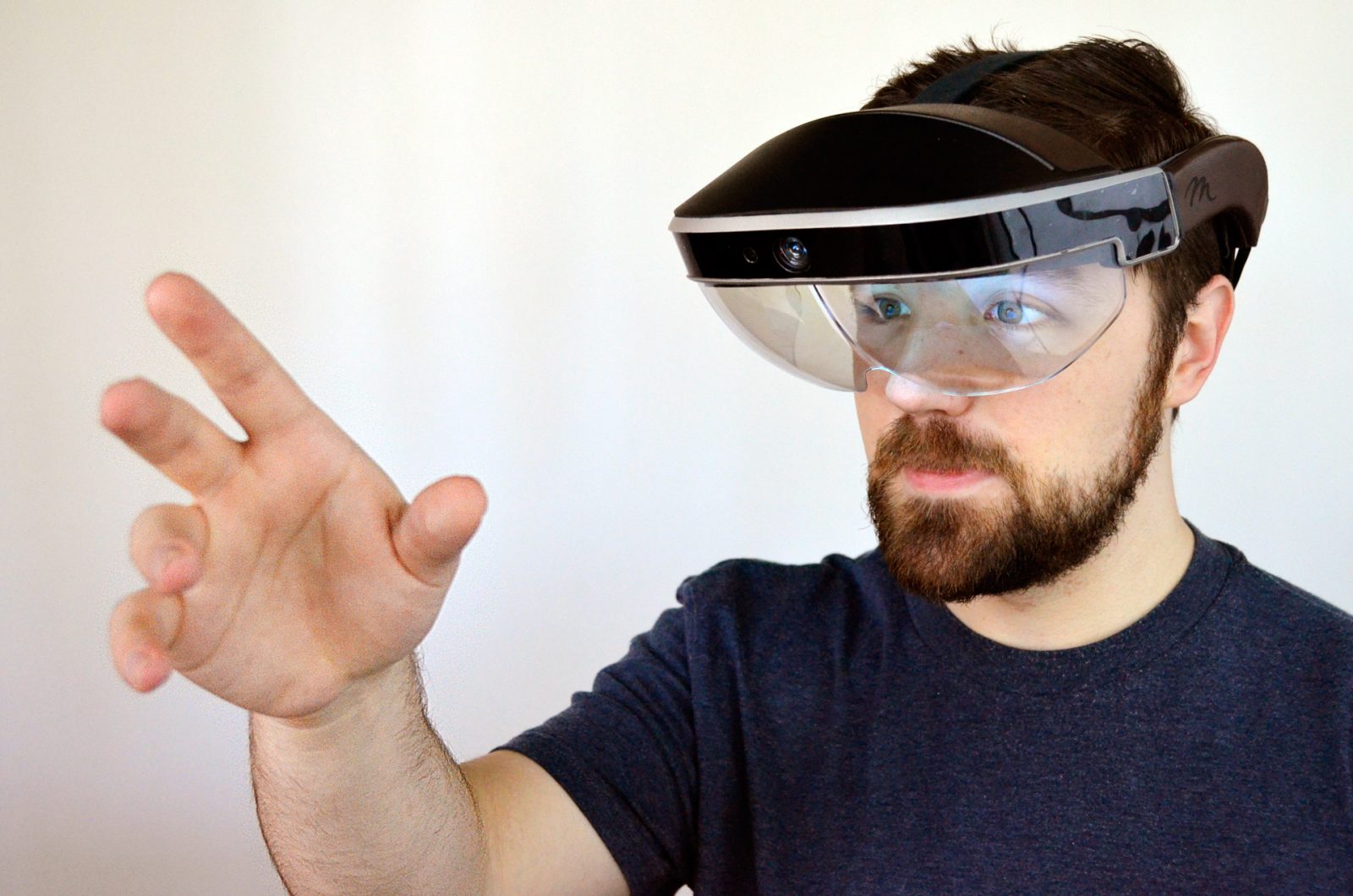
(source: roadtovr.com)
With any luck, those devs will create software for the common plebeian, such as myself. Then we can all toss out our TVs, finally.
While the TV industry rushes to create the thinnest, most flexible display, virtual reality is gonna put displays wherever we want them, however, we want them. Every surface and non-surface can play a different movie, video game or whatever we want.
AR, once perfected, will be the death of the TV salesperson. It may also mean the death of the laptop as we know it. Who needs that clunky thing when you can use a virtual one?
The Meta headset is still a little big for us to wear like a pair of corrective lenses, but what Meta packs under the hood is a sign of what will follow. We are years away from a whole different way of computing.
The Meta Experience
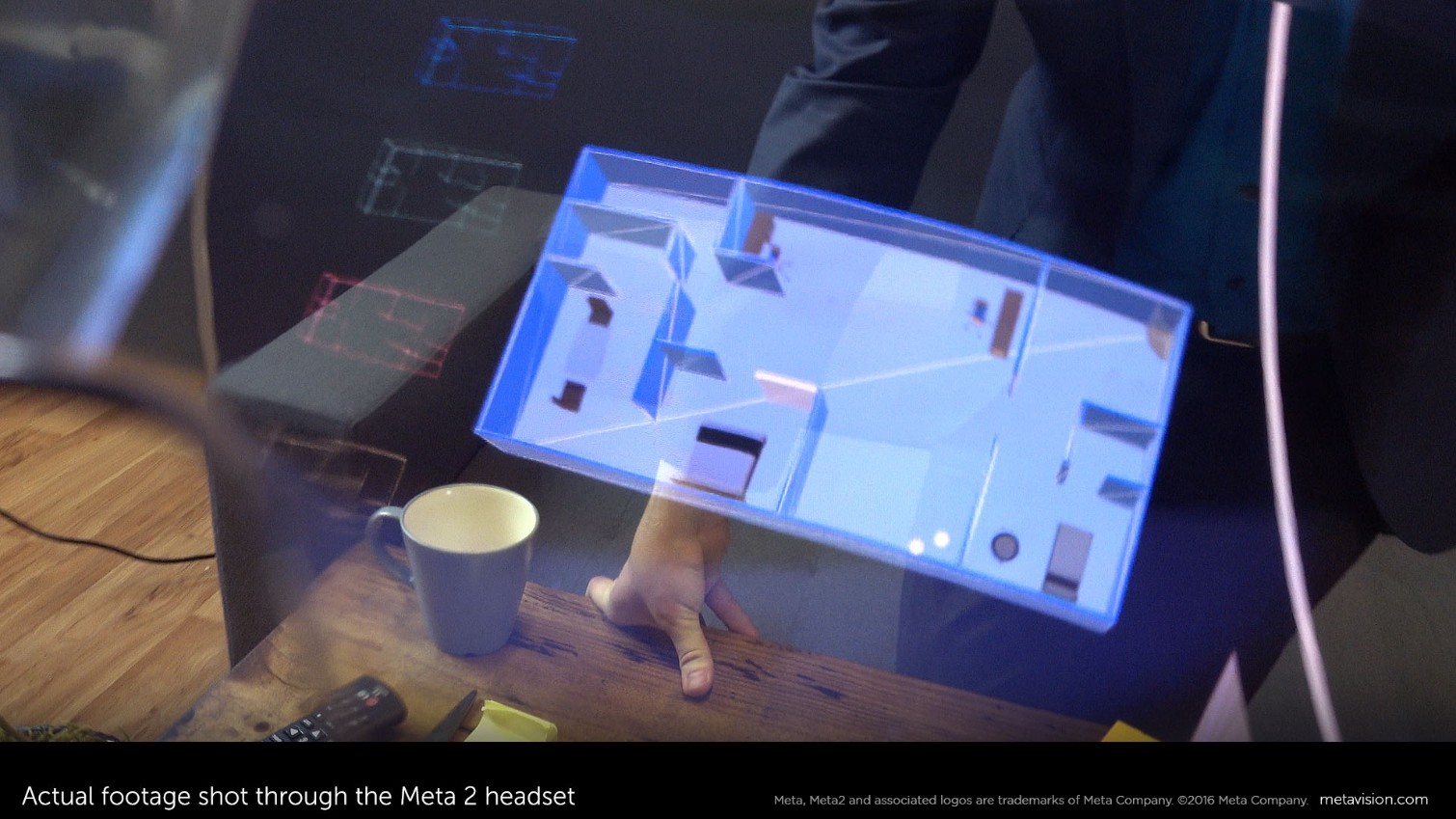
(source: tomshardware.com)
There are many parts of these glasses that remind me of the Hololens, everything but the price. (Meta costs just under $1K. Hololens, the developer version, is $3K.)
Unlike VR headsets, where the view is obscured, AR sets like Meta and Hololens allow users to gaze through a lens. The augmented parts of the experience project and refract into your eyes from the clear lenses, so you can meld reality with the augmentations.
The shell is plastic. Above your eyebrows, they’ve housed most of the chips and power. Just above your eyes, they’ve mounted the cameras and sensors, which allow you to interact with the augmented parts or your experience.
The virtual parts you interact with are hard to define, as they’ve only just created some simple models for the demo. They could be anything, models, parts, characters in a game.
The key with Meta is you don’t need an expensive controller to touch those augmented items. Your bare hands are good enough.
As designated by the developer, you can move or and manipulate objects something like the real world. The difference being, in the real world, you couldn’t put your head inside of a running car engine to diagnose it. In Meta’s AR, you could.
Serious Specs

(source: buy.metavision.com)
Field of view (FOV) and refresh rate are two of the biggies with the various reality headsets on the market.
The refresh rate is what makes the viewing experience smooth. A slow refresh and you get jumpy images. Using a powerful PC can help, but the headset has to refresh fast enough that you don’t notice to keep the view realistic.
Meta has a 60Hz refresh, compared to something like the Oculus Rift, which boasts a 90Hz refresh. My guess is that these numbers will jump like drive storages climbed in ‘90s PCs. We’ll soon laugh about refresh rates below 500 Hz.
The FOV for Meta is 90 degrees, which isn’t bad considering the Rift dominates the VR industry at 110 degrees. Again… when we hit 360 degrees, nobody will talk about this anymore.
The Microsoft Hololens, by contrast, is paltry 30 degrees. Combining these specs with a price 1/3 of the Hololens, it’s obvious who might win this informal first battle.
A New World
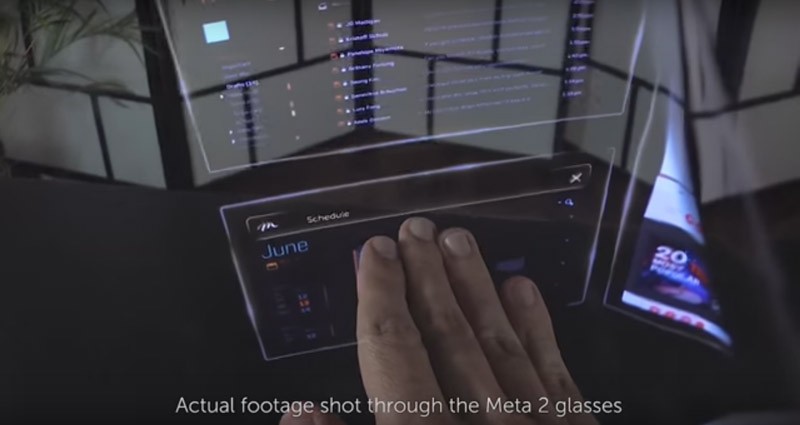
(source: sitepoint.com)
Imagine your world without TVs, laptops, cellphones, tablets or projectors. Take every computing interface you use then toss it. This is the promise of wearables.
What AR brings to the game is the ability to remove the largest bit of real estate mandated by all these devices; the display. What we have right now could work in this capacity, although it may not have the resolution we prefer, and we’d have to wear some Star Wars looking goggles.
These aspects of technology change fast. Already we have engineers working on AR glasses, which look not much different than a pair of normal specs.
Beyond that, we move to contacts and viola; we live in a world we can shape to fit out needs.
It’s not that far away.
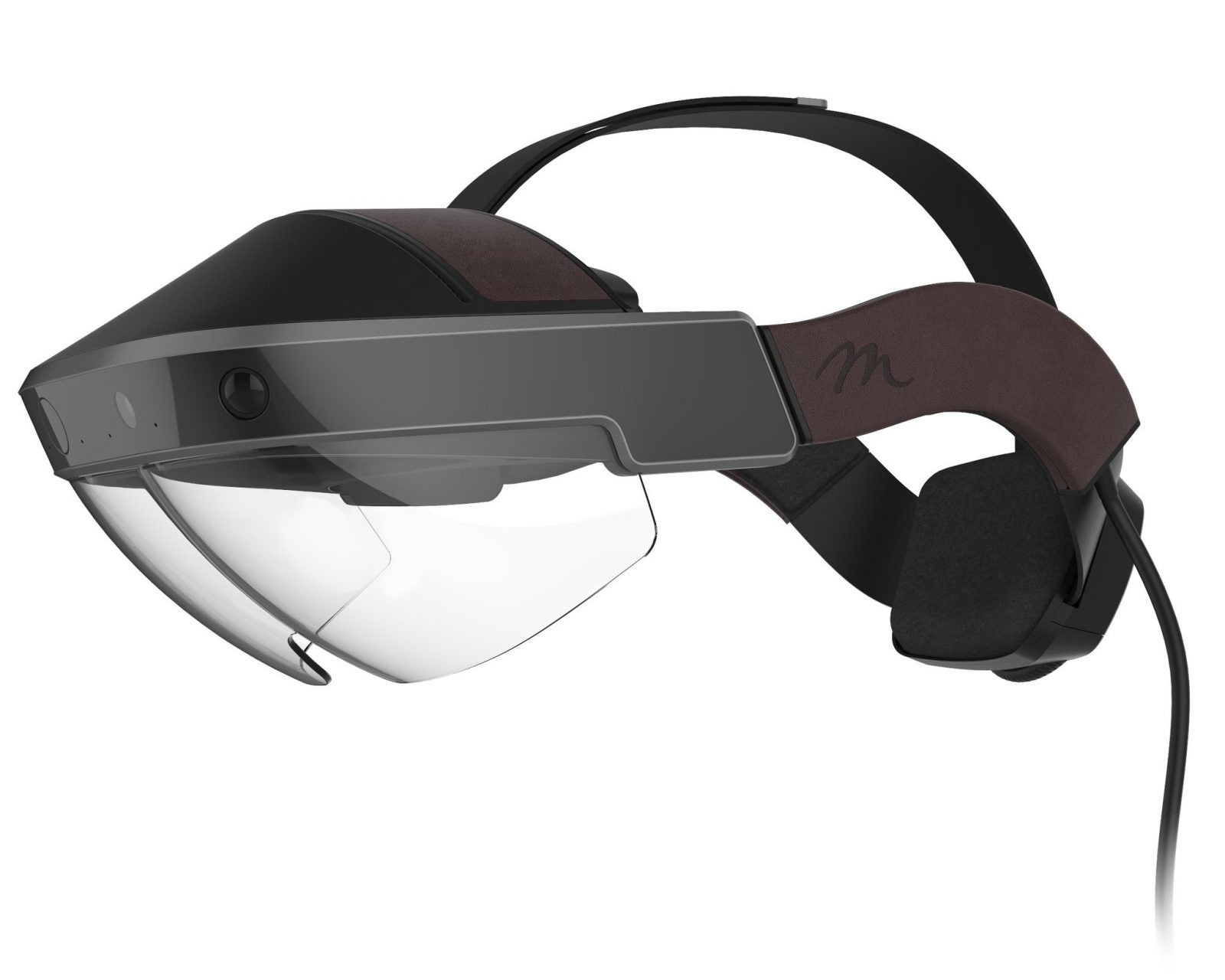
(source: buy.metavision.com)
In fairness, I assume my fair share. There may be an alternative future, one where people reject AR.
If you think it’s rude how folks stare into their smartphones, what about one where they seem to make eye-contact while they’re lost in AR? We may not be ready for that world. We may never.
People may reject it the way they rejected Google Glass, but I think we’ll see this world come to fruition in time. Glass will come back. People will acclimate.
In time you will no longer shop for a new TV. Instead, the world will come to you.
Order your own Meta or learn more by visiting the Metavision site.